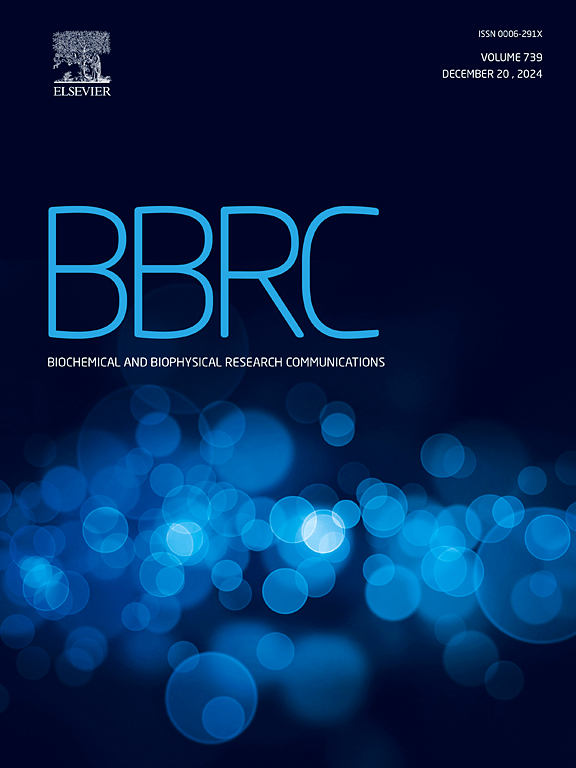槲皮素3,4′-二甲醚与微管蛋白配合物的结构为药物设计提供了理论依据
IF 2.5
3区 生物学
Q3 BIOCHEMISTRY & MOLECULAR BIOLOGY
Biochemical and biophysical research communications
Pub Date : 2025-06-23
DOI:10.1016/j.bbrc.2025.152245
引用次数: 0
摘要
微管由αβ-微管蛋白异源二聚体组成,因其在细胞分裂中起关键作用而成为抗癌治疗的关键靶点。许多化合物已被发现与微管蛋白相互作用并破坏微管动力学,特别是那些针对秋水仙碱结合域的化合物。例如,某些黄酮类化合物已经证明能够与该位点结合并抑制微管聚合。尽管它们具有潜力,但开发基于黄酮的药物的进展受到小管蛋白配体复合物结构数据不足的限制。在这里,我们展示了微管蛋白与黄酮衍生物槲皮素3,4 ' -二甲醚(QU34)配合物的高分辨率(1.92 Å)晶体结构,从原子细节上阐明了特定的分子相互作用。通过分析该结构以及其他秋水仙碱位点抑制剂,我们澄清了先前的构效关系(SAR)发现,并为设计针对该位点的优化黄酮类似物提供了一个框架。本文章由计算机程序翻译,如有差异,请以英文原文为准。

Structure of quercetin 3,4′-dimethyl ether in complex with tubulin provides a rationale for drug design
Microtubules, composed of αβ-tubulin heterodimers, serve as key targets for anticancer therapeutics due to their critical role in cell division. Numerous compounds have been discovered to interact with tubulin and disrupt microtubule dynamics, particularly those targeting the colchicine-binding domain. Certain flavones, for instance, have demonstrated the ability to bind to this site and suppress microtubule polymerization. Despite their potential, progress in developing flavone-based drugs has been limited by insufficient structural data on tubulin-ligand complexes. Here, we present the high-resolution (1.92 Å) crystal structure of tubulin in complex with a flavone derivative, quercetin 3,4′-dimethyl ether (QU34), elucidating the specific molecular interactions at atomic detail. By analyzing this structure alongside other colchicine-site inhibitors, we clarify prior structure-activity relationship (SAR) findings and offer a framework for designing optimized flavone analogs targeting this site.
求助全文
通过发布文献求助,成功后即可免费获取论文全文。
去求助
来源期刊
CiteScore
6.10
自引率
0.00%
发文量
1400
审稿时长
14 days
期刊介绍:
Biochemical and Biophysical Research Communications is the premier international journal devoted to the very rapid dissemination of timely and significant experimental results in diverse fields of biological research. The development of the "Breakthroughs and Views" section brings the minireview format to the journal, and issues often contain collections of special interest manuscripts. BBRC is published weekly (52 issues/year).Research Areas now include: Biochemistry; biophysics; cell biology; developmental biology; immunology
; molecular biology; neurobiology; plant biology and proteomics

 求助内容:
求助内容: 应助结果提醒方式:
应助结果提醒方式:


